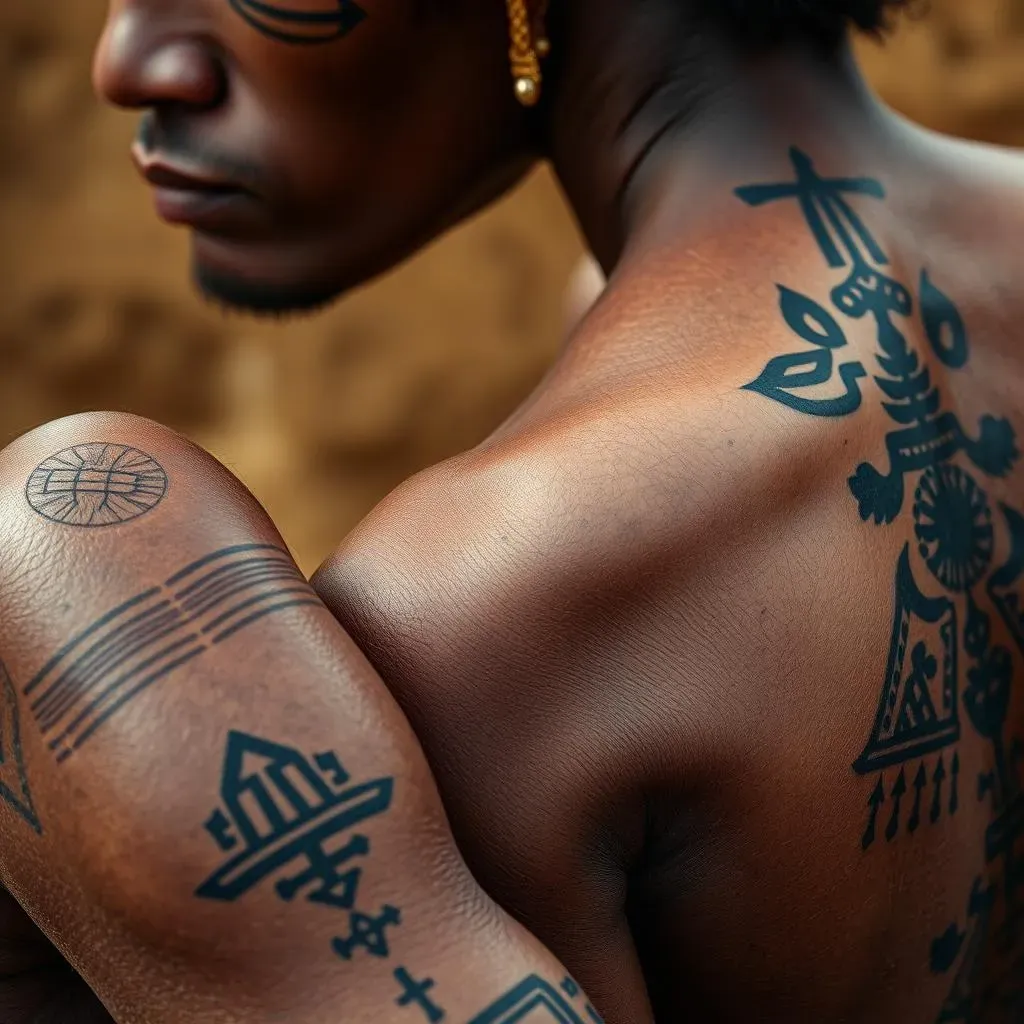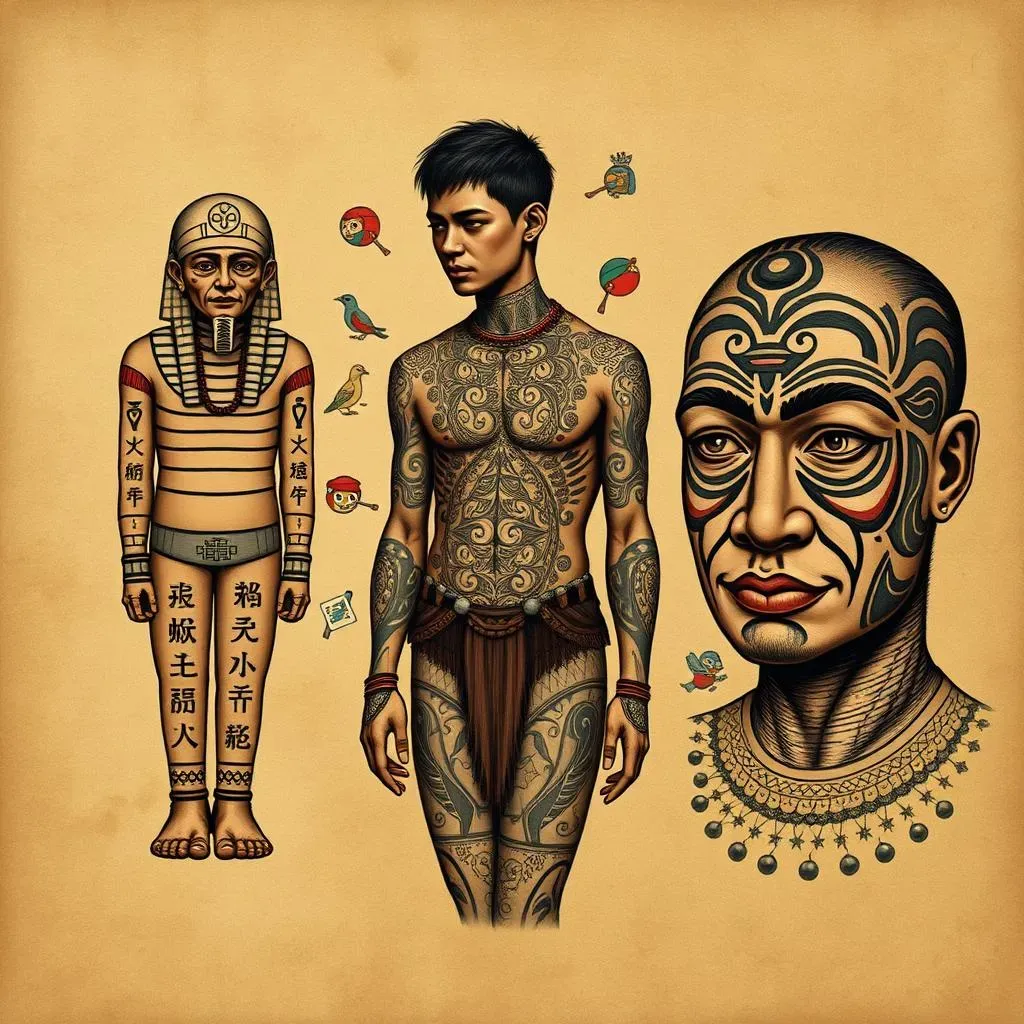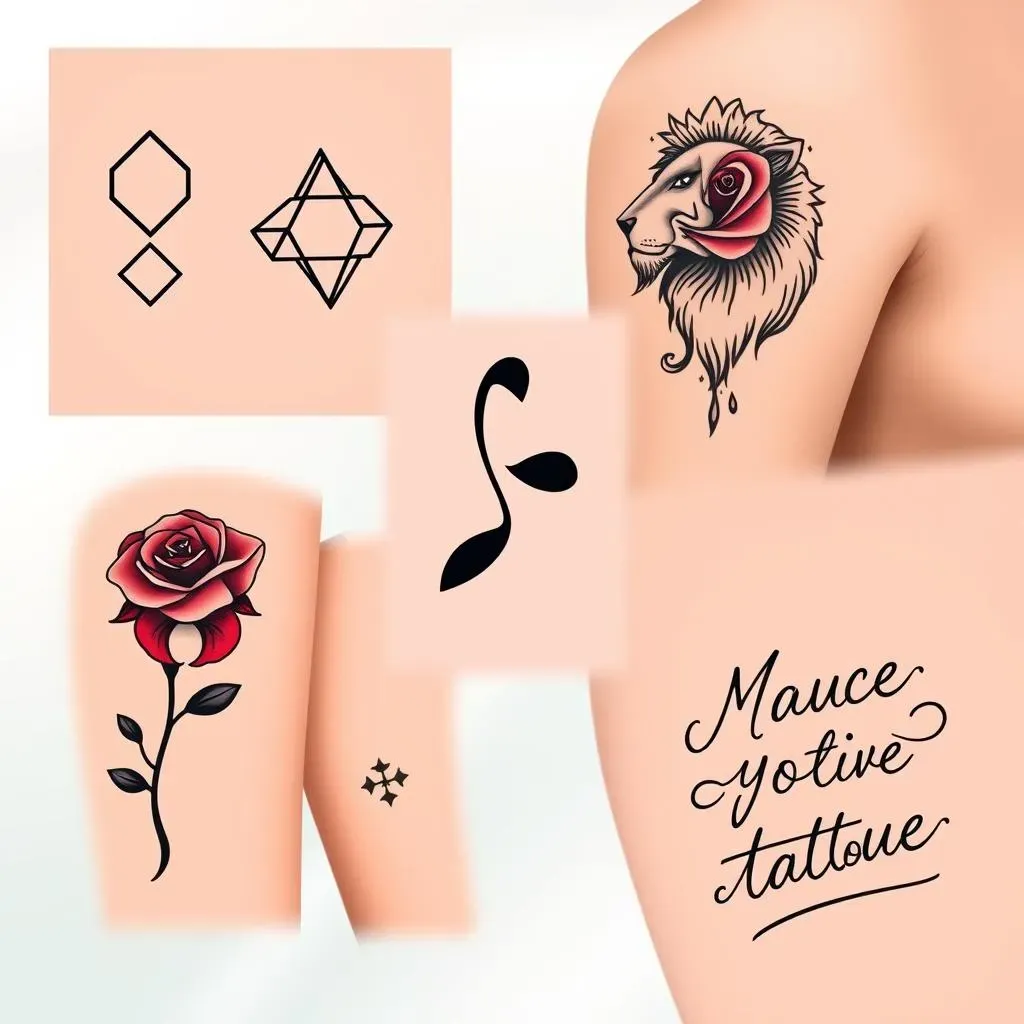Table of Contents
Ever looked at a tattoo and wondered, "What's the story behind that?" Tattoos aren't just random drawings on skin. They're a language, a form of expression that goes back centuries. People have used them to show their status, their beliefs, and even their life stories. So, what did the various designs of tattoo indicate? This article will take you on a journey through time and across cultures to uncover the hidden meanings behind different tattoo styles. We'll explore how ancient societies used tattoos to mark important life events and how those traditions have evolved into the modern ink we see today. You'll discover that every line, every symbol, and every color can tell a story, and you might even find a new appreciation for the art of tattooing. We'll be looking at historical meanings, cultural significance and what it all means today, so get ready to learn all about the fascinating world of tattoo symbolism.
Tattoos as a Language: What Did the Various Designs Indicate?
Tattoos as a Language: What Did the Various Designs Indicate?
so let’s kick this off. Tattoos? They're way more than just pretty pictures, you know? It's like, imagine a time way before Instagram and even writing, people used their skin as a way to communicate! It's wild. Think of it as a visual language. The designs weren't random. They told stories, showed who you were, and what you’d done. A specific symbol might show you were a warrior, or that you belonged to a certain family. It's like a walking, talking, skin-deep resume. It’s also like a secret code, only if you know what to look for. It’s a way that people could tell the world who they were without saying a word.
For example, in some cultures, a certain pattern of dots on the face might show how many battles you’d won or what your social standing was in the tribe. It’s like having a badge of honor, only it's permanently etched onto you. Some designs were for protection, like a talisman to ward off evil spirits. Others were to show your connection to nature, with symbols of animals or plants that were important to you. So, when we look at tattoos, we aren’t just seeing ink on skin, we're seeing a piece of history, a glimpse into someone's life, and a conversation being had through art. It makes you think, what would our tattoos say about us?
Tattoo Purpose | Example | Meaning |
|---|---|---|
Social Status | Facial Tattoos | Indicated rank and lineage |
Protection | Spiritual symbols | Ward off evil or bad luck |
Life events | Marks on body | Commemorate milestones like marriage or achievements |
Historical Meanings: Tattoos Across Cultures and Time
Historical Meanings: Tattoos Across Cultures and Time
Ancient Ink: Marking Life's Journey
so when we talk about tattoos, it's not just a modern thing. People have been doing this for thousands of years! We're talking way, way back. Imagine ancient Egypt, mummies with tattoos, it's like finding a secret diary on someone's skin. They weren't just doodling, they had a purpose, you know? They were marking everything from religious beliefs to social status. It's like looking at a history book, but on a person.
And it wasn't just the Egyptians, either! Across the globe, different cultures had their own tattoo traditions. In some Polynesian islands, tattoos were a rite of passage, showing you were becoming an adult. The designs could be incredibly complex, covering the entire body. It's like they were wearing their life story on their skin. For them, it was a way to connect with their ancestors and the spiritual world, a kind of living artwork.
Global Traditions: A World of Ink
Think about the Maori people of New Zealand, their face tattoos, or 'moko,' were incredibly intricate and unique to each person. These weren't just pretty patterns, they told your family history, your achievements, and your place in society. Each curve and line had a meaning. It’s like having a family tree carved on your face, a constant reminder of who you are and where you come from. It is amazing how they made that into art.
Then, you’ve got the Japanese, with their full-body tattoos, called 'irezumi.' These were often associated with the Yakuza, but they also had roots in art and folklore. The designs, which could take years to complete, often depicted mythical creatures and scenes from history. It's like they were turning their bodies into living canvases, telling epic stories through ink. It’s a bold way to express yourself, right?
Culture | Tattoo Style | Meaning |
|---|---|---|
Ancient Egypt | Simple symbols | Religious and status markers |
Polynesia | Complex patterns | Rites of passage, ancestry |
Maori | Facial moko | Lineage, achievements |
Japan | Full-body irezumi | Art, folklore, Yakuza affiliation |
From Ritual to Rebellion: The Evolution of Tattooing
Over time, the meaning of tattoos shifted. They went from being a sign of tradition and status to being a form of rebellion and self-expression. Sailors used tattoos to mark their travels, while prisoners used them to show their affiliation. It's like, the same art form can have completely different meanings depending on who's wearing it. Tattoos weren't always accepted. For a long time, they were seen as something only for outsiders and outcasts.
But, even though the meaning and social view of tattoos changed, one thing stayed the same: they were always a way for people to tell their own stories. Even now, people get tattoos for all sorts of reasons. It's like a personal badge that shows what matters to you. Whether it's a tribute to a loved one, a reminder of a personal struggle, or just a cool design you like, tattoos are still a powerful way to express yourself. So, you see, tattoos aren't just ink on skin, they're a living history.
Modern Tattoo Symbolism: What Your Ink Might Say About You
Modern Tattoo Symbolism: What Your Ink Might Say About You
so fast forward to today, and tattoos are everywhere! It’s like, they’ve gone totally mainstream, right? But, even though they're more common, the meaning behind them is still super personal. People aren’t just getting random designs anymore; they’re choosing images and symbols that mean something to them. It's like, your skin becomes a personal art gallery, and you're the curator. For some, it might be a way to show off their love for a certain hobby, like a skateboarder getting a cool board design, or a musician getting a music note. Others might get a tattoo to honor a loved one, like a memorial tattoo with their name or a special date. It's all about telling your story through art. It’s pretty cool when you think about it.
And it's not just about personal stories. Some people use tattoos to show their beliefs or values. You might see someone with a peace sign, showing their support for peace, or a tree, representing their connection to nature. It's like, your tattoo becomes a statement, a way to let the world know what you stand for. Then there are the trends, like the minimalist tattoos of simple lines and shapes, or the geometric designs that look like something out of a cool math book. It's like, even the way we choose to style our tattoos says something about who we are and what we are into. It really makes you wonder, what do my tattoos say about me?
Tattoo Theme | Possible Meaning | Example |
|---|---|---|
Hobbies | Passion and interests | Skateboard, music notes |
Memorial | Honoring loved ones | Name, date, portrait |
Beliefs | Values, principles | Peace sign, tree, religious symbol |
Style | Aesthetic, personality | Minimalist, geometric, watercolor |
Let's talk about specific designs. You see a lot of animals, right? A lion might represent courage and strength, while a butterfly could symbolize transformation and change. It's like, each animal has its own meaning, and people choose them to reflect their own character or journey. Then there are flowers, roses are timeless, right? They can stand for love, beauty, or even loss, depending on how they're drawn. It's like, even something that looks simple can have a deep, complex meaning. It's all about the story they're telling, and the person who's wearing the tattoo.
And let's not forget about the words and quotes. People get their favorite lyrics, book passages, or personal mantras tattooed on them. It's like, they're making their thoughts and beliefs a permanent part of their skin. It's like a daily reminder of what's important to them. So, the next time you see someone with a tattoo, remember, it's not just ink, it's a story waiting to be told. It really makes you think about the power of expression, and how we choose to express ourselves.
So, what's the takeaway from all of this? Tattoos are a powerful form of self-expression. They're a way to tell your story, show your values, and connect with others. Whether it's an ancient symbol or a modern design, every tattoo has a meaning, and it's up to the wearer to decide what that meaning is. The next time you see someone with a tattoo, take a moment to appreciate the art and the story it represents. It might just give you a whole new perspective on the world of ink. It's like, we're all walking, talking art galleries, and our tattoos are just one way we choose to express ourselves. What will your next tattoo say?
The Lasting Legacy of Ink: What Tattoos Truly Indicate
From ancient tribal markings to modern masterpieces, tattoos have always been more than just skin-deep. They're a visual diary, a cultural artifact, and a personal statement all rolled into one. As we've seen, the answer to "what did the various designs of tattoo indicate" isn't simple. The meaning is layered, evolving with time and culture. Whether it's a rose symbolizing love or a dragon signifying power, each tattoo carries a unique story. So, the next time you see someone's ink, remember there's a whole world of history and personal meaning etched into their skin. It's a powerful reminder that sometimes, the most profound stories are told without a single word.